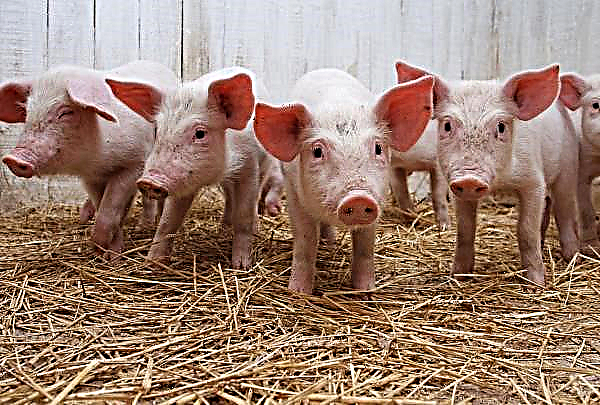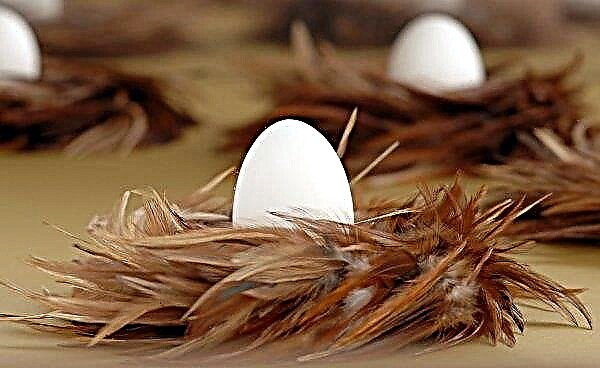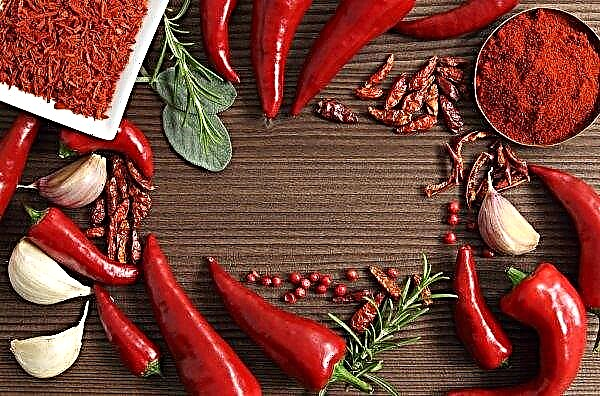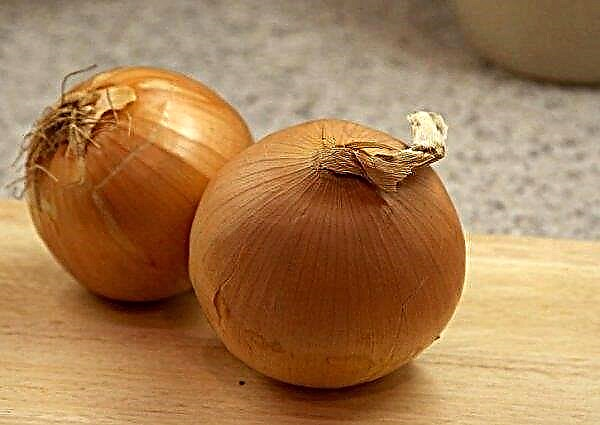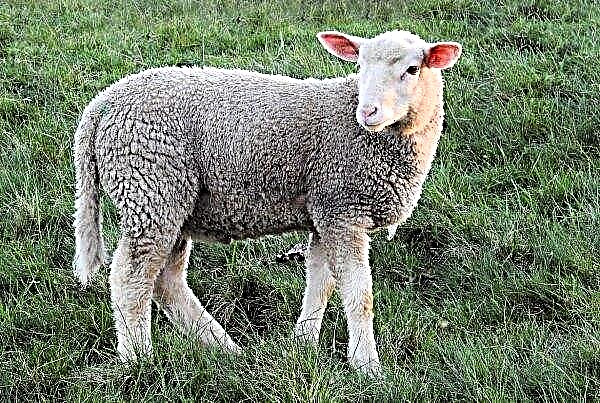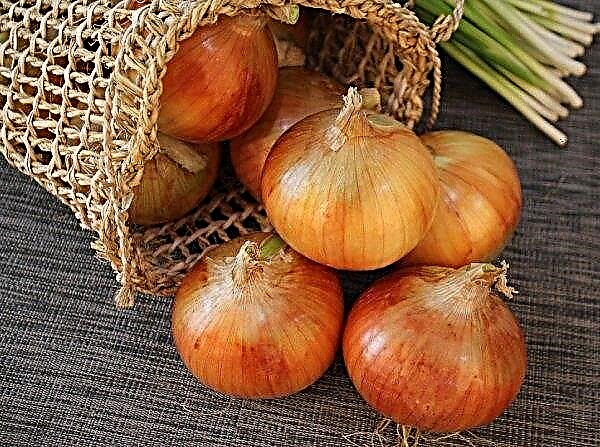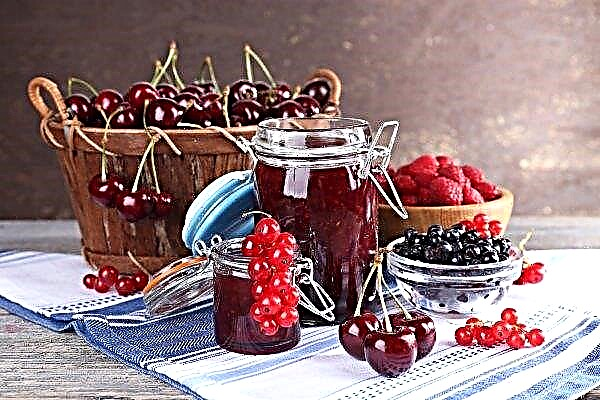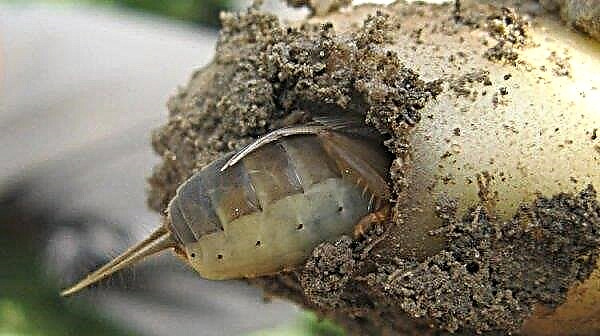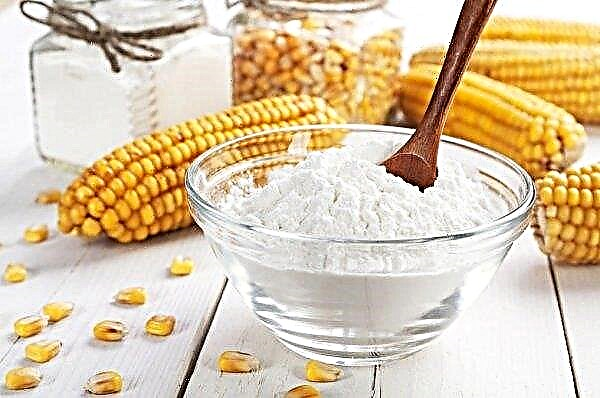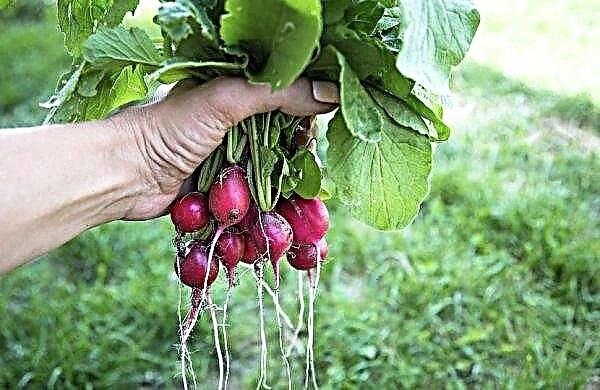Each crop has its own characteristic period of technical ripeness, which is definitely worth considering when harvesting. The article will discuss the stages of ripeness and the features of the collection of corn as one of the most common crops in our fields and gardens.
Corn ripening stages
The stages of technical ripeness of corn are not defined exactly like other crops, so if we are talking about this plant, it is worth focusing on the following names:
- Milk stage - It is characterized by a liquid state of the endospermic part of the grain, which is why when pressed against the grain, milky-white juice appears. On average, this condition is typical for corn aged 15–20 days after the start of pollination of flowers.
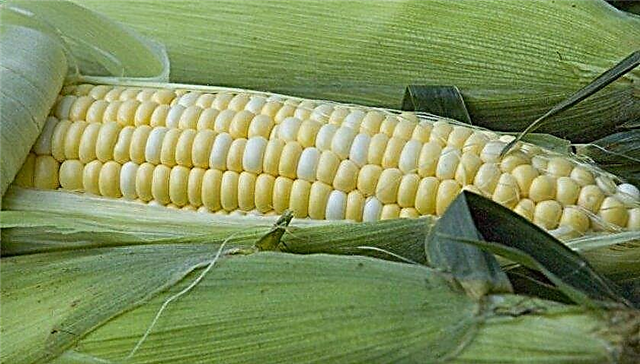
- Wax ripeness (early and late) - characterized by a densification of the endosperm, first to the state of softened cheese, and then to the consistency of a dense bar of soap. The more mature the cob, the less sweetness will remain in it, while the level of dextrins and starch, on the contrary, will increase. The beginning of this stage is from 26 days after pollination of plants.
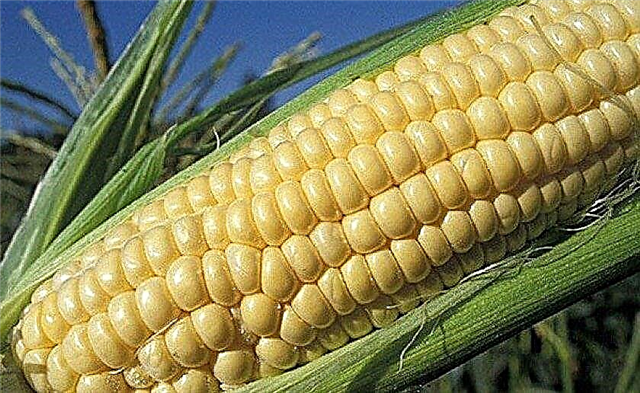
- Vitreous ripeness - lasts from 36 to 48 days after pollination. During this period, corn kernels dry out and look more wrinkled. The impact of negative environmental factors at this stage can no longer harm corn, however, sudden freezing can still cause rotting or the appearance of a dark layer on grains.

- Full (biological) maturity - comes from 55 days after the start of pollination and is characterized by high hardness and bright yellow color of corn kernels. Seeds collected during this period will give strong seedlings for the next year, so if you need seed, then now is the time to harvest. At this stage, the leaves of the plant and the husks of the ears are no longer green, but yellow.

How to understand that you can collect corn?
The variety of corn has a great influence on the specific time of harvesting corn, so it is so important to know how you can establish the ripeness of the crop, without focusing on a month or a day.
First of all, pay attention to:Did you know? Corn first came to the territory of Russia during the Russo-Turkish war, that is, in 1768–1774. Because of this, at first it was even called Turkish wheat.
- top ears as they ripen first. By their deviation to the side, one can judge the level of maturity of the corn (as soon as they drop perpendicular to the stem, you can harvest, since it has already reached full maturity);
- cobs condition. The grains in them should be well-swollen, and over the entire surface, and the threads covering them should be brown and completely dry. The top of a ripe cob will always be round and dull;
- grain condition. If a white liquid appears when pressing on a grain from it, head of cabbage can already be boiled. A clear liquid indicates immaturity, and a thick and viscous indicates excessive ripeness;
- grain color. During the period of milk ripeness, all grains are on the cob of a light yellow color, and the closer the corn comes to the stage of full ripeness, the darker and richer it becomes.
Video: how to determine if a corn cob has ripened
When growing corn for popcorn, the appearance of the stem should also be taken into account: be sure to wait until it turns brown. Usually this variety is harvested a little later than the other varieties, and some gardeners wait until not only the stem becomes brown, but also the ear or even the leaves. Accordingly, in this case it will not be possible to precisely orient itself in which month it is worth collecting corn.
Dates and techniques for harvesting corn
The period for collecting cows for culinary purposes and for seeds for planting next year is significantly different. Based on the specific purpose of the final use of the harvest, it is worth considering the optimal timing and features of the harvesting process.
For fresh consumption
The ideal time for collecting corn for cooking is considered to be the stage of milk ripeness, when the grains are as tender, soft and juicy as possible, so they boil quickly. In small private farms, such a crop is harvested exclusively by hand, since any agricultural machinery can damage the cobs.
The optimal time for collecting corn for food is the swelling time of all grains, over the entire surface of the ears, as well as the drying of the "hair". It is then that the maximum amount of sugars and other useful components are present in the vegetable. If, feeling the ear, you can’t understand anything, try to bend the top leaves and look at it: it should be soft cream.
Important! In the event that the plant has not passed the test, and it is too early to harvest, do not forget to return all the turned leaves to the place, otherwise the birds will peck the corn.
For popcorn
Popcorn will not work out of ordinary fodder or even sweet corn, so if the planted plant interests you only in this regard, then you will have to purchase special varieties: for example, “Volcano” or “Oerlikon”. In this case, the procurement of raw materials is carried out during the biological maturation of the cobs, when the stem part turns yellow and dries, and the panicles turn brown.
Corn on popcorn can not be left until frost, otherwise even with a little exposure to cold, it may lose its ability to burst and is not suitable for cooking. It is not difficult to collect ripened corn: it breaks off perfectly from a dried stalk and does not require the use of any cutting objects. In the future, the collected ears should be cleaned of leaves and laid out in one layer in a dark, well-ventilated room. Here they must lie for at least two months.
Ears of corn
Corn is harvested for grain or fodder for agricultural animals at the stage of full, that is, biological maturity, when it can already be sent for storage. With timely collection, the cobs will have a sweet taste that lasts for several days, so they can be eaten.
At the time of collection, most of them are deviated from the stem part and occupy an almost horizontal position, so all that is required during the collection is to unscrew them from the base (it is not necessary to use scissors or secateurs). At the initial stages of collection, only heads of cabbage located closer to the apex, and then the middle and lower specimens, are selected.Important! To preserve the sweetness of the harvested corn for several days or even weeks, it is advisable to store the harvested grains at low temperatures. So, the morning harvest of corn, and then its storage in the refrigerator or basement will help save sugar for 7-10 days.

To silo
When harvesting corn from fields to silage, it is advisable to select ears at the stage of milk-wax maturity, when the grains are sweet enough and optimally moist. This is the time of the highest concentration of chemical nutrients, therefore, silage prepared from such raw materials will be of high nutritional value.
When harvesting for these purposes, it is advisable to focus even more on the stage of wax ripeness, when the grains already contain less liquid, but the moisture is still enough to prevent the conversion of sugar into starch.
At early harvesting of corn for silage, when it has not yet managed to accumulate the optimal amount of nutrients in itself, one should not hope for high nutritional properties, which means that more concentrated feeds will be needed. For harvesting at the wax stage, you can use the combine, which will greatly simplify the task of harvesting.
How to store the crop?
Harvested in September or October should be immediately cleaned of leaves and corn stigmas (if you do not plan to store the fruits in dried form), and then spread on pallets in a dark and well-ventilated room with an air humidity of 16% - for grains on the cob, and not higher than 13% - for a refined crop. You can achieve such values in the attics and in other relatively warm rooms.
As for the containers for storage, the grain can be conveniently folded into plastic containers or textile bags, and with a large quantity - in ordinary bags. In this form, the corn can stand until spring or even until the next harvest, the main thing is that moisture does not accumulate in the storage location.
It is possible to keep the collected ears fresh only for several weeks - provided that you use a refrigerator. Before placing on a shelf near the heads of cabbage, you should remove the leaves, clean the stigmas, and then place them in airtight bags, in which they are sent to the compartment with vegetables.
Sweet varieties lie for about two weeks, after which they begin to frown and deteriorate. Under these conditions, the refined grain will remain a little longer, but it is advisable to pre-treat it before placing it in the refrigerator compartment by placing it in cold water for 20 minutes with lemon juice and salt (1 teaspoon per 1 liter of water). Soaked grain is dried and only then packaged in bags in which it will lie for the next three weeks.
Did you know? If you plant corn along with pumpkin, then the soil will be better protected from moisture evaporation, and weeds will significantly limit their growth. This method of weed control was still used by Indian tribes.
Useful tips for use
Corn is really a very tasty and healthy product that can not only be boiled, but also baked in the oven, if it is a sweet or very sweet variety. Serving ready-made cobs to the table is better with salt and butter, however, in this case, such a dish can no longer be called dietary.
In addition to culinary purposes, the collected ears can be used in other areas of human life. So, medicines prepared on the basis of the plant will have excellent choleretic, diuretic and hematopoietic action, which is confirmed by scientists from different countries of the world. More often for medicinal purposes, not grains are used more, but stigmas of the plant, previously boiled or infused with alcohol. World-famous bourbon is made from corn spirit, and plant grains can be used in the preparation of sauces, cereals and even desserts.
As for the tips for preparing the plant, the following should be considered as general recommendations:
- Strict adherence to all the requirements of the corn cooking recipe with observance of the cooking time (it is advisable to cook fresh cobs of the milk stage of maturity no longer than 20-30 minutes so that they do not become too hard).
- For the preparation of popcorn and simple baking in the oven, different varieties are required that cannot be used interchangeably.
- If the corncobs have already been ripened, but you really want tasty and juicy boiled corn, you can soak the heads of cabbage in a water-milk mixture prepared in a 1: 1 ratio. After four hours, the cobs can be cooked normally.
- During cooking, it is advisable not to salt the water, otherwise the corn kernels will become hard. Oil and a little sugar will help replace salt during cooking. Salt itself can be added after cooking.
Properly cooked corn will become a very valuable food component in the menu of any person, and not to mention the healing properties of its stigmas and leaves. Growing it in the country or in the field, you can provide your family with an excellent source of nutrients.





